Five Foolproof Waterfowl Recipes
You can’t miss with these delicious preparations
You can’t miss with these delicious preparations

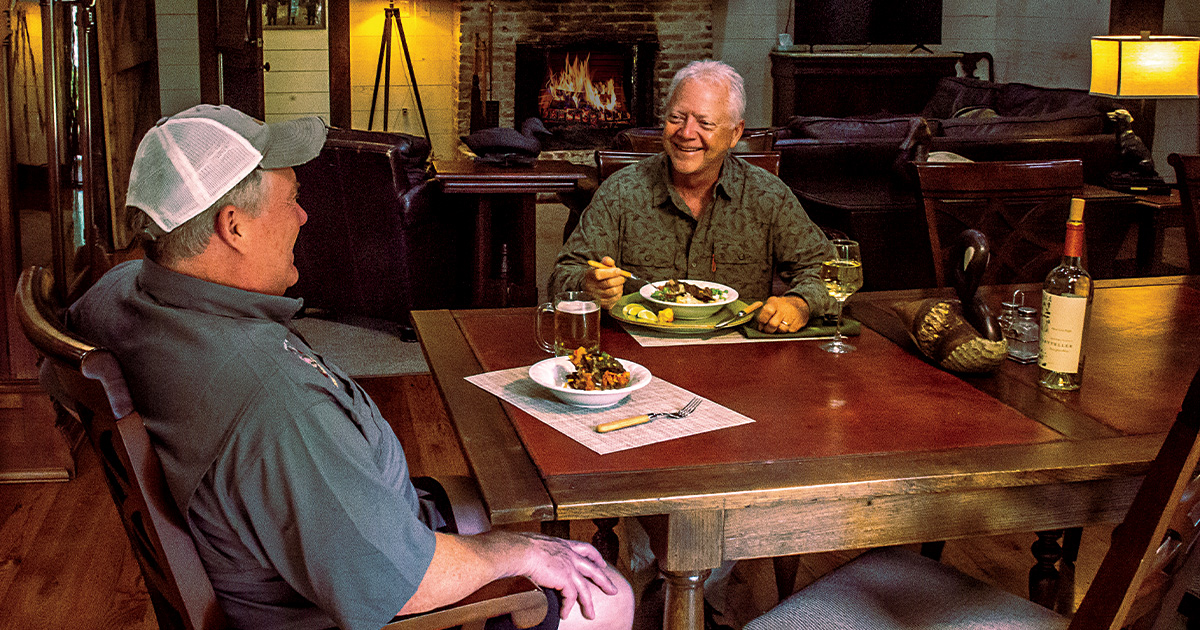
The most simply prepared wild duck I ever ate was also one of the best. I was on the Athabasca River in Alberta, at the camp of an Athabasca Chipewyan First Nation hunter, and we were cooking over an open fire. The ducks were skewered on wooden spits angled over the coals, and fat dripping from the northern birds sizzled and spat. Holy smokes, those ducks were amazing! Nothing but duck and fire and smoke, and you held each one by the wooden stake as you ate it, like a Neanderthal lollipop of meat.
What I learned that day was that cooking wild duck can be tricky, complicated, and stressful—but only if you want it to be. It can also be surprisingly easy. These recipes require more than fire to pull off, but none of them are difficult, and none of them require special skills or implements. And each of them is unforgettably awesome.
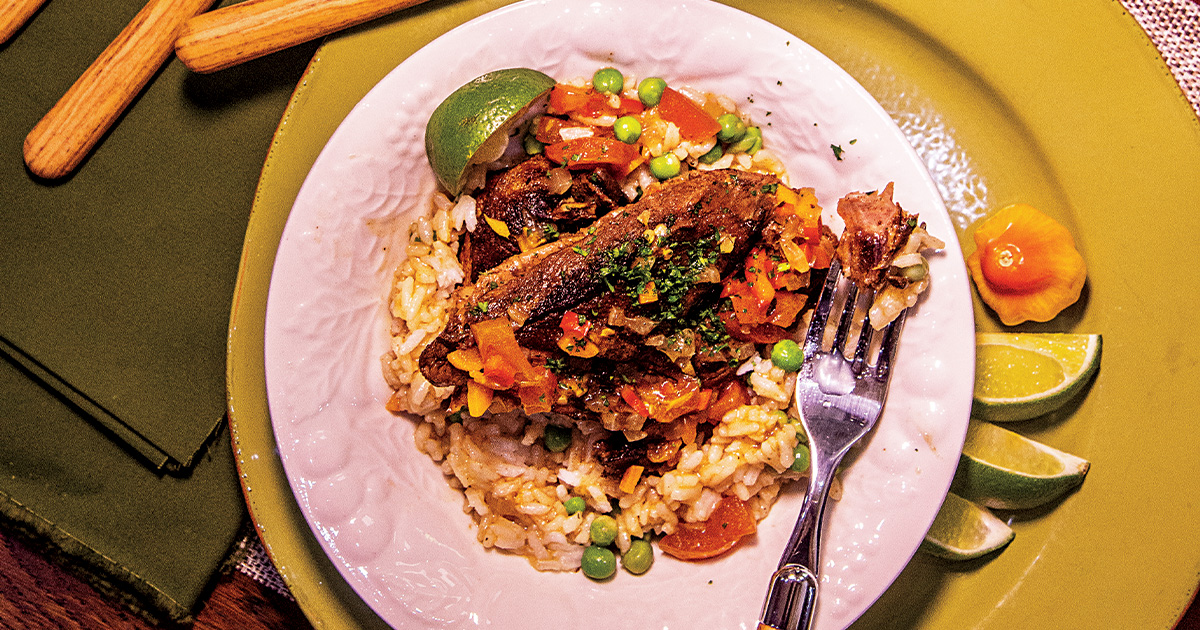
My first taste of traditional Jamaican brown sauce stew was at Boston Beach, Jamaica. Brown stew is a classic island dish with a heady punch of aromatic spices. My version allows for a customized heat level: Use a Scotch bonnet pepper for the high-octane original version, or dial down the temperature by using a habanero or jalapeño instead. I like cooking whole ducks, but they can be a chore to serve to multiple diners. This alternative, which uses duck pieces, is a snap.
INGREDIENTS
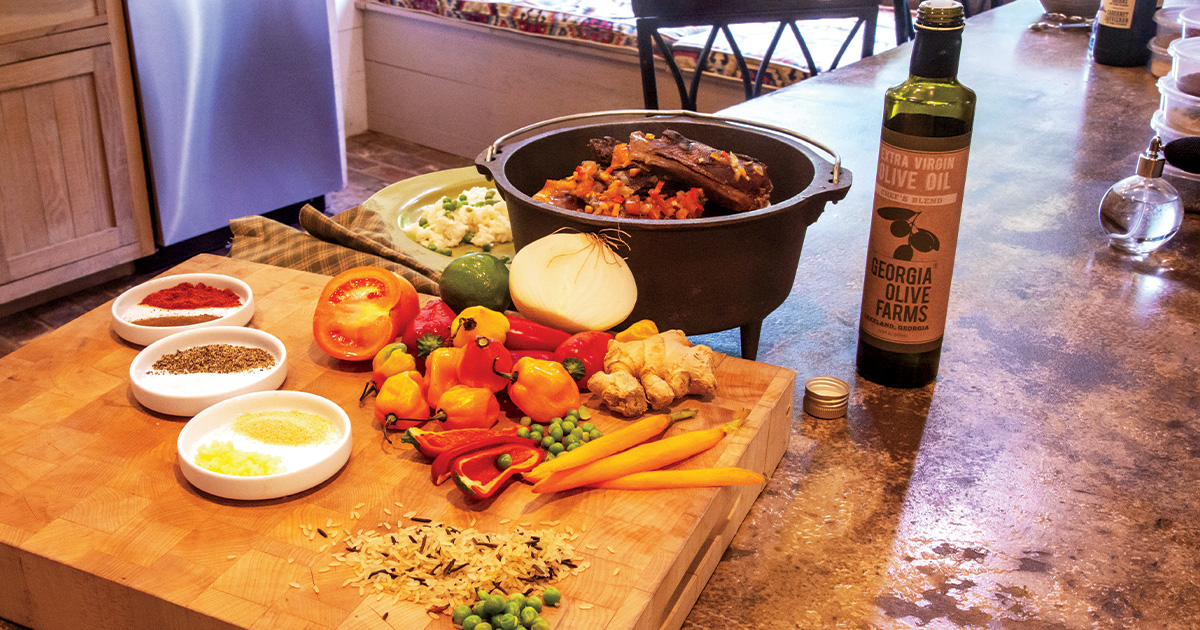
With exotic flavors from the Caribbean, this easy recipe allows you to customize the level of heat to your liking.
PREPARATION
1. Score duck pieces with a sharp knife and rub lime halves into the meat.
2. In a large bowl, mix all remaining ingredients except oil, chicken stock, ketchup, and Scotch bonnet, habanero, or jalapeño pepper. Stir in the duck pieces, cover, and place in the refrigerator overnight.
3. Heat oil over medium-high heat in a Dutch oven. Remove duck pieces from the spice mixture (reserving the mixture), place them in the Dutch oven, and brown on all sides. Remove duck pieces and place them on a separate dish.
4. Pour the reserved spice mixture into the Dutch oven. Reduce heat to medium and add Scotch bonnet, habanero, or jalapeño pepper. Cook for five minutes, stirring frequently to release the fonds from the bottom of the pan. Add the duck, chicken stock, and ketchup. Stir for one minute to mix.
5. Increase heat to bring the mixture to a low boil, then reduce to low. Cover the Dutch oven and simmer, stirring occasionally, for 30 minutes.
6. Serve with white rice and green peas.
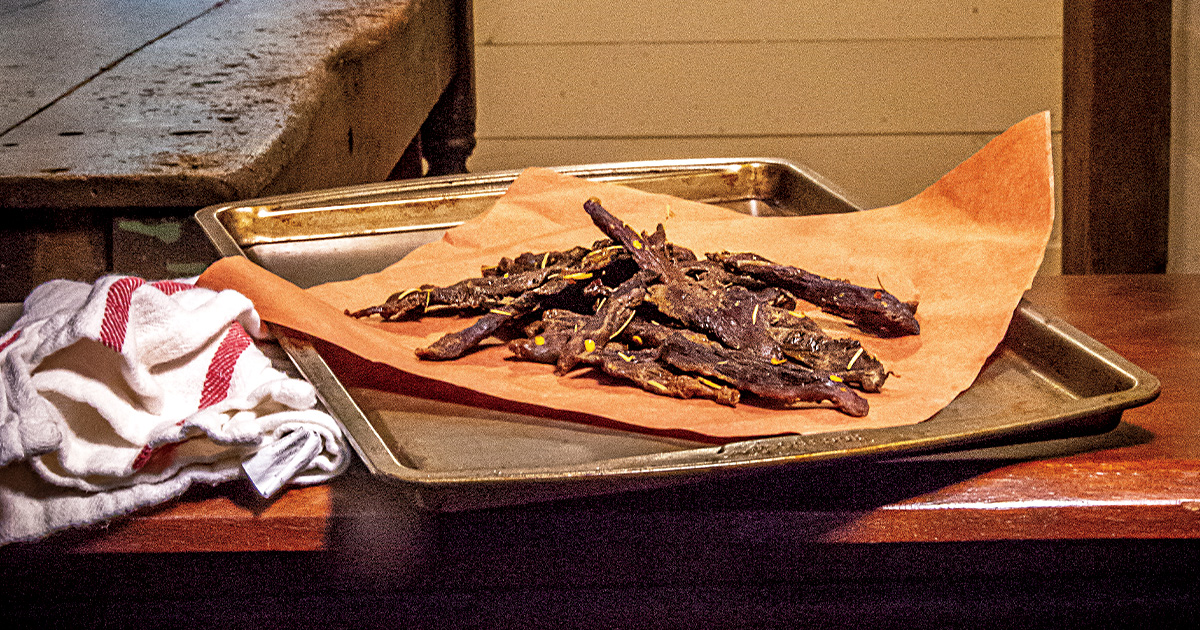
Once, and only once, did I attempt to ingest a merganser. It was one foul fowl even when marinated in heavy spices and converted to jerky. However, that has been my only jerky failure, and I’ve worked through a bunch of duck species. This easy method lets you customize the texture to your liking. I like jerky strips that still have a meaty mouthfeel, a bit on the chewy side, and not so dry. If you like things a little more crunchy, no problem. Just slice the meat thinner, or leave it in the oven longer. Either way, duck breast fillets turn into pungent, densely flavored jerky with just the right pepper bite. You can’t make a better duck blind snack.
INGREDIENTS
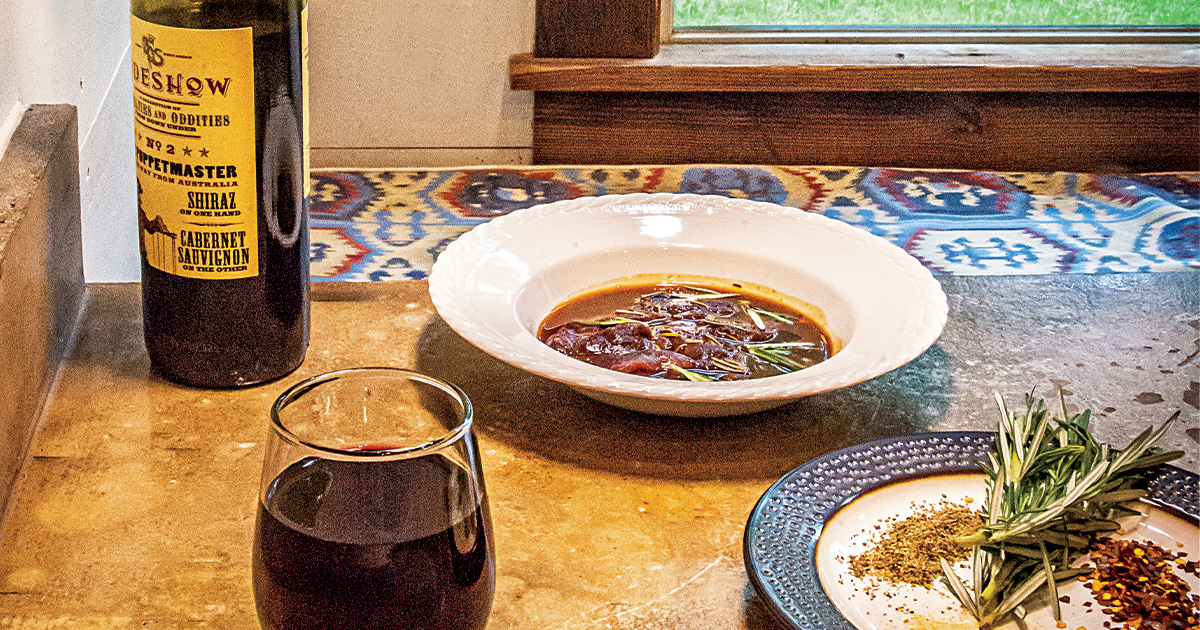
There are thousands of jerky recipes out there, but few are easier than this one. Just soak your duck strips in a simple marinade and then bake them in the oven.
PREPARATION
1. Make a marinade by mixing all ingredients except the duck in a noncorrosive dish or plastic bag.
2. Partially freeze the duck breast fillets to make slicing easier.
3. Carefully remove as much tendon and fat from the fillets as possible. Then slice them into quarter-inch strips with the grain. Place the sliced duck in the marinade and let it sit overnight in the refrigerator.
4. Line the bottom of the oven with aluminum foil and spray the racks with cooking spray. Drape meat strips directly on the racks. Prop the oven door open two inches with a toothpick or a short pencil.
5. Cook at 150 to 170 degrees until the jerky pieces bend but don’t break.
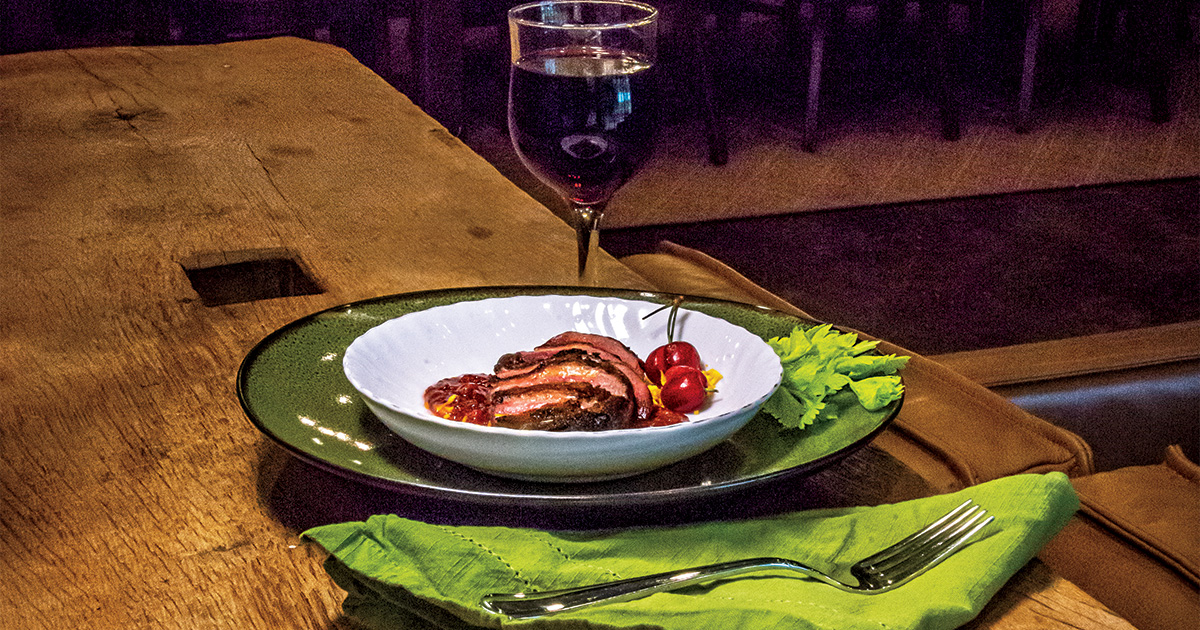
Barbecue chef and ace caterer Matt Register runs Southern Smoke BBQ in Garland, North Carolina. He’s hunted many of the famed clubs in Mississippi and Arkansas, but he still hankers for the beaver ponds and sloughs of his native Tar Heel State. He cautions cooks to take it slow when preparing this simple, elegant dish. “You can cook a teal breast hot and fast,” he says, “but give a fat mallard or pintail its own sweet time. You want to render the fat and crisp the skin, and that’s not something you can rush.”
Register’s other pro tip is to make the smoked cherry chutney before you head for camp, and pack it in a sealed container. “I don’t know about other folks’ duck camps,” he laughs, “but ours isn’t the kind where you’re going to find an immersion blender!”
INGREDIENTS
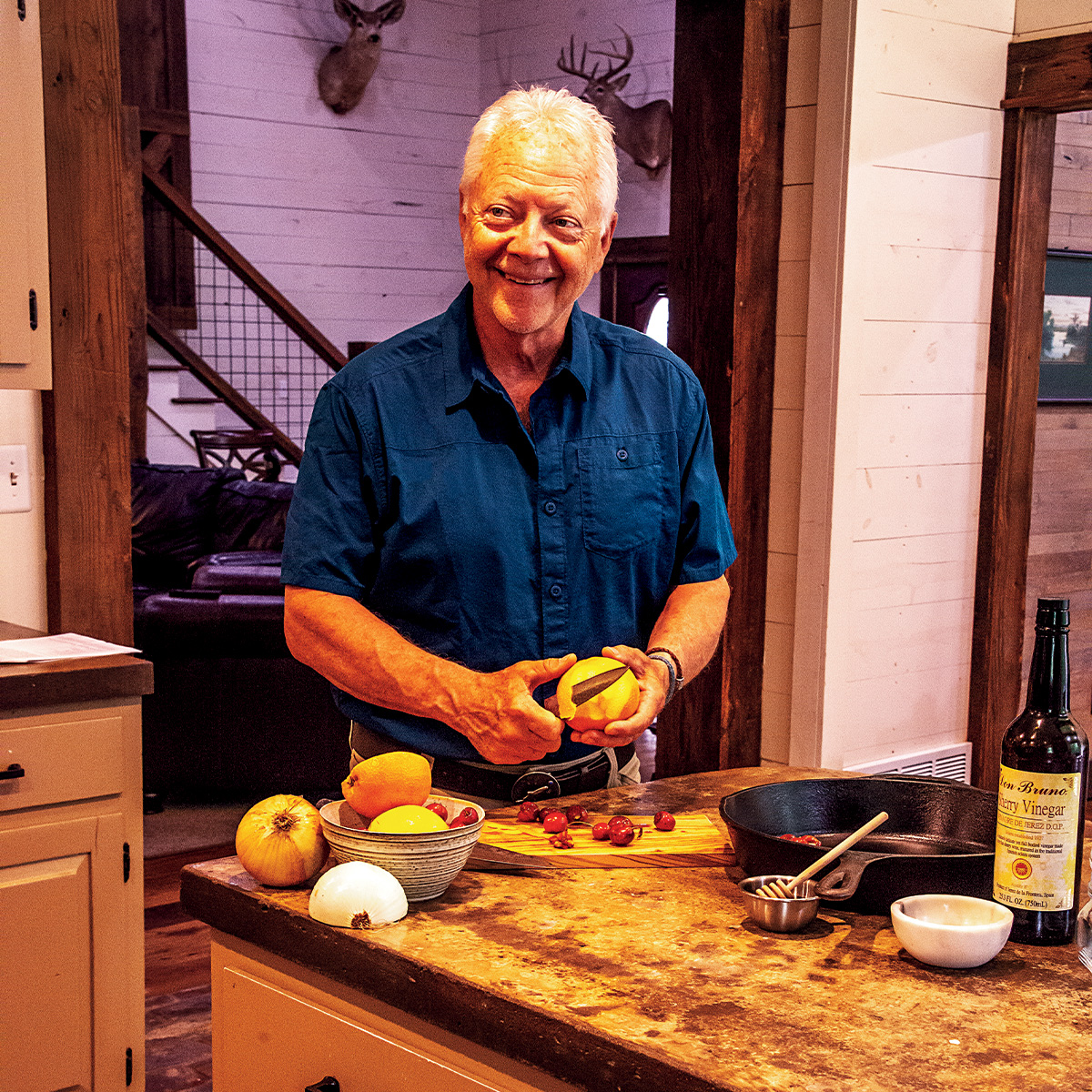
The author prepares the chutney, which is the star of this show. Its unique blend of sweetness, citrus, tang, smoke, and heat brings out the best in a pan-seared duck breast fillet.
PREPARATION
For the chutney
1. Heat a smoker to 225 degrees. In a disposable pan, combine cherries, orange peel, and sugar. Smoke for 30 minutes or until cherries become soft. Remove from smoker and set aside.
2. Add oil to a small, heavy-bottomed pan over medium heat. Add garlic and cook for 2 to 3 minutes, stirring often, until garlic becomes aromatic. Add cherries and remaining ingredients to pan and cook for 5 to 7 minutes.
3. Remove mixture from pan and let it cool. Chutney can be served chunky, or use an immersion blender to make it more creamy.
For the duck
1. Pat the duck breast fillets dry with a paper towel. Score the fat cap on each fillet with a sharp knife. Let sit for 10 minutes, then season both sides with sea salt and white pepper.
2. Place the fillets skin-side-down in a cold cast-iron pan and turn the heat to medium-low. After about 8 or 9 minutes, the rendered fat will bubble. If the fat is popping, reduce the heat. As more fat is rendered, remove it with a spoon and set it aside in a heat-resistant container.
3. After another 7 to 10 minutes, the fat will mainly be rendered away and the skin will be golden brown. Baste the exposed side of the fillet with rendered fat.
4. Flip the fillet over and raise the heat to medium. Cook for about 5 more minutes for rare, 6 to 7 more minutes for medium rare, or a little longer for well done. Remove the duck from the pan and let it rest for 7 to 10 minutes.
5. To serve, slice the duck breast fillet and top with the chutney.
For more on Register’s elevated approach to Southern fare, check out his cookbook, Southern Smoke: Barbecue, Traditions, and Treasured Recipes Reimagined for Today.
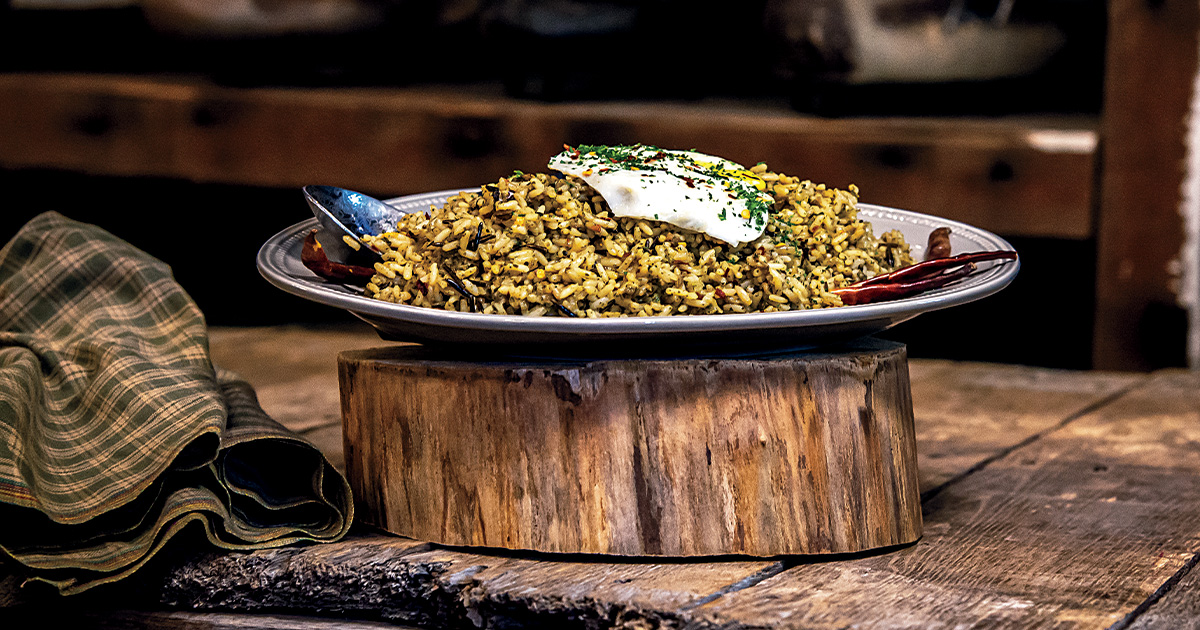
Born and raised on Oahu, Hawaii, Colin Sako moved to California when he was 24 years old and has been steeped in the Pacific Coast’s culinary traditions. An avid angler and sporting clays shooter, he is an executive corporate chef in Los Angeles and chef to the Los Angeles Sparks WNBA team. “Anything with duck,” he says, “is better than anything with chicken.” His spin on Cajun Dirty Rice with wild duck is a fabulous side dish or breakfast feast, and it also makes a slam-dunk stuffing for chicken, fish, and other game meats.

Dirty rice is a staple of Cajun cuisine. This wild take on the classic dish incorporates duck livers and gizzards with traditional ingredients like andouille or chorizo sausage, garlic, paprika, and cayenne.
INGREDIENTS
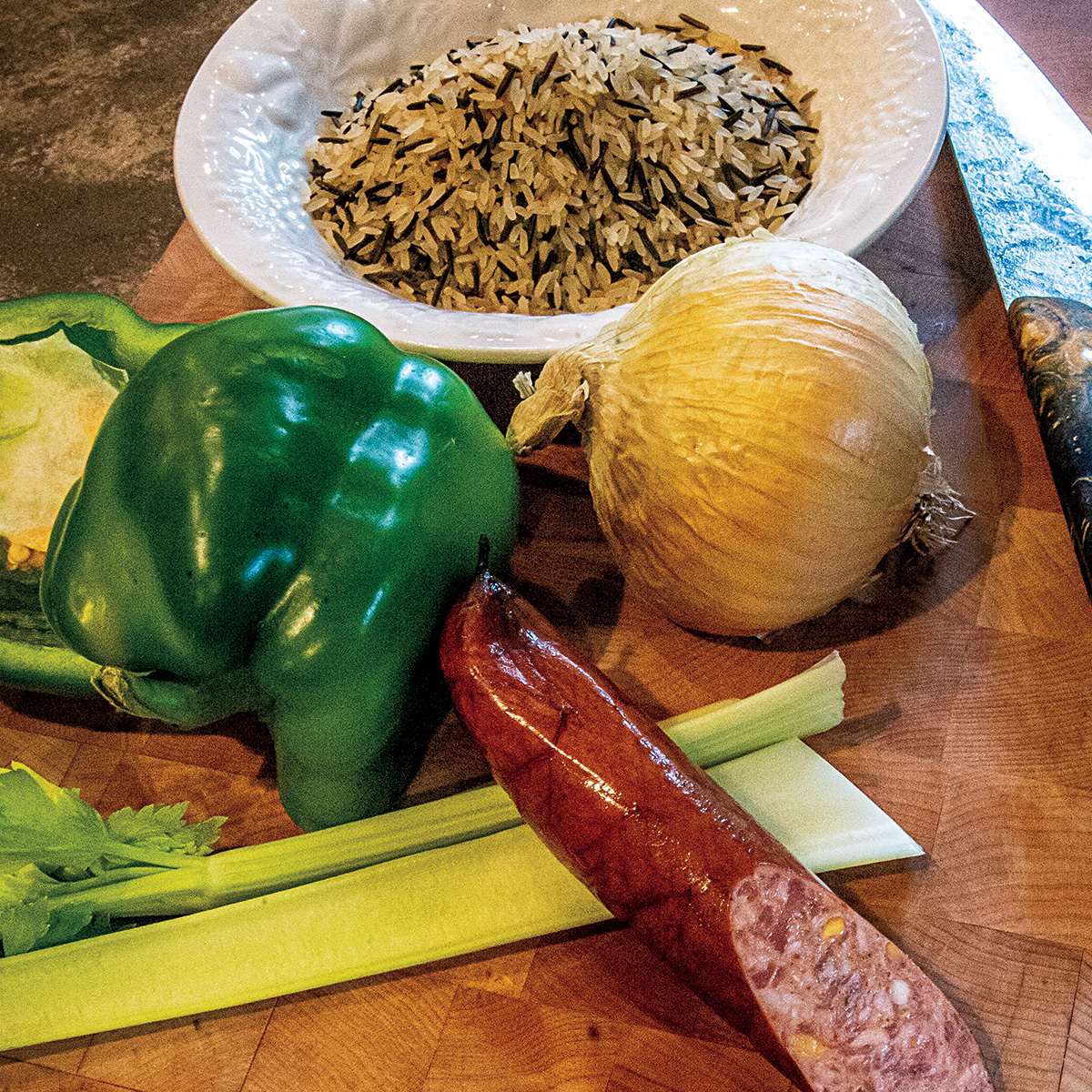
PREPARATION
1. Heat duck fat in a large Dutch oven over medium-high heat. Add sausage, livers, and gizzards and sauté until lightly browned, then remove meat using a slotted spoon and set aside. When meat is cool, combine and chop to medium fine.
2. Add garlic, celery, bell pepper, and onion to Dutch oven and sauté until just soft. Add rice and mix well. Add the broth and then the chopped meats. Bring to a simmer and remove from heat.
3. Place in a 350-degree oven for 35 to 45 minutes. Once cooked, add the salt, pepper, paprika, and cayenne. Finishing in an oven develops a crispy crust.
4. Remove from oven, plate, and serve topped with fried over-easy eggs.
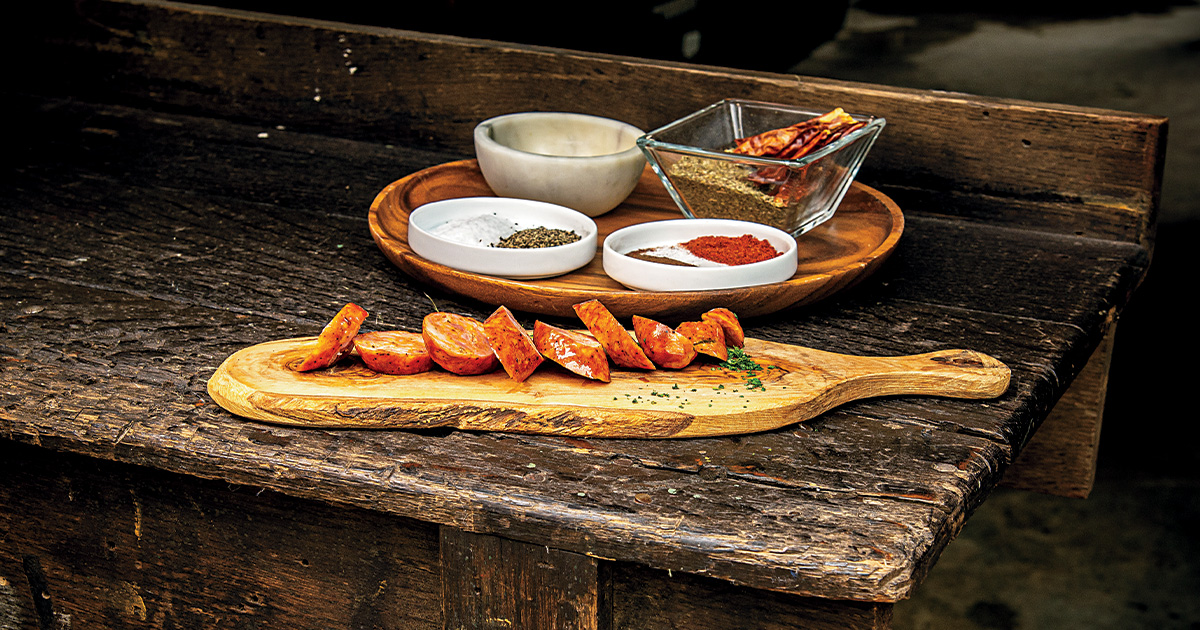
Adam Steele splits his time between running a custom butchery and wild game–processing abattoir in Sanford, Florida, and running the kitchen at Colorado’s Turret’s End Stann Ranch. He’s also a butchering instructor and part of the Harvesting Nature team, which is a wild foods community, cooking school adventure series, and digital platform. Steele’s duck chorizo is a super approach for novice and experienced sausage makers. “Its bolder flavors make a great entry-level offering to those who may be averse to some of the stronger notes associated with game,” he says.
INGREDIENTS

Chorizo sausage is made around the world in a variety of different ways. The ingredients in this recipe complement the rich and complex flavor of duck.
PREPARATION
1. Preheat a pan over high heat. Wearing gloves, de-seed and stem the dried chilis, breaking them into pieces. Toast them in the pan, moving them often, for 8 to 10 minutes or until they become aromatic.
2. Soak chilis in 8 ounces of water for 30 minutes or until soft. Create a chili paste by blending chilis in water with a blender or food processor; immersion blenders work great for these small amounts.
3. Mix all dry ingredients.
4. If using a grinder, cube meat to fit the throat and grind. If mincing meat, proceed to fine-mince all meats together. It’s best to work in as cold a place as possible, and return any unused meat to cold storage.
5. Add the mixed dry ingredients and chili paste to the ground meat and mix well by hand, squeezing through fingers, or with a mixer paddle, until sticky.
6. Add vinegar and continue mixing; this will break the emulsion bond slightly.
Ducks Unlimited uses cookies to enhance your browsing experience, optimize site functionality, analyze traffic, and deliver personalized advertising through third parties. By continuing to use this site, you agree to our use of cookies. View Privacy Policy